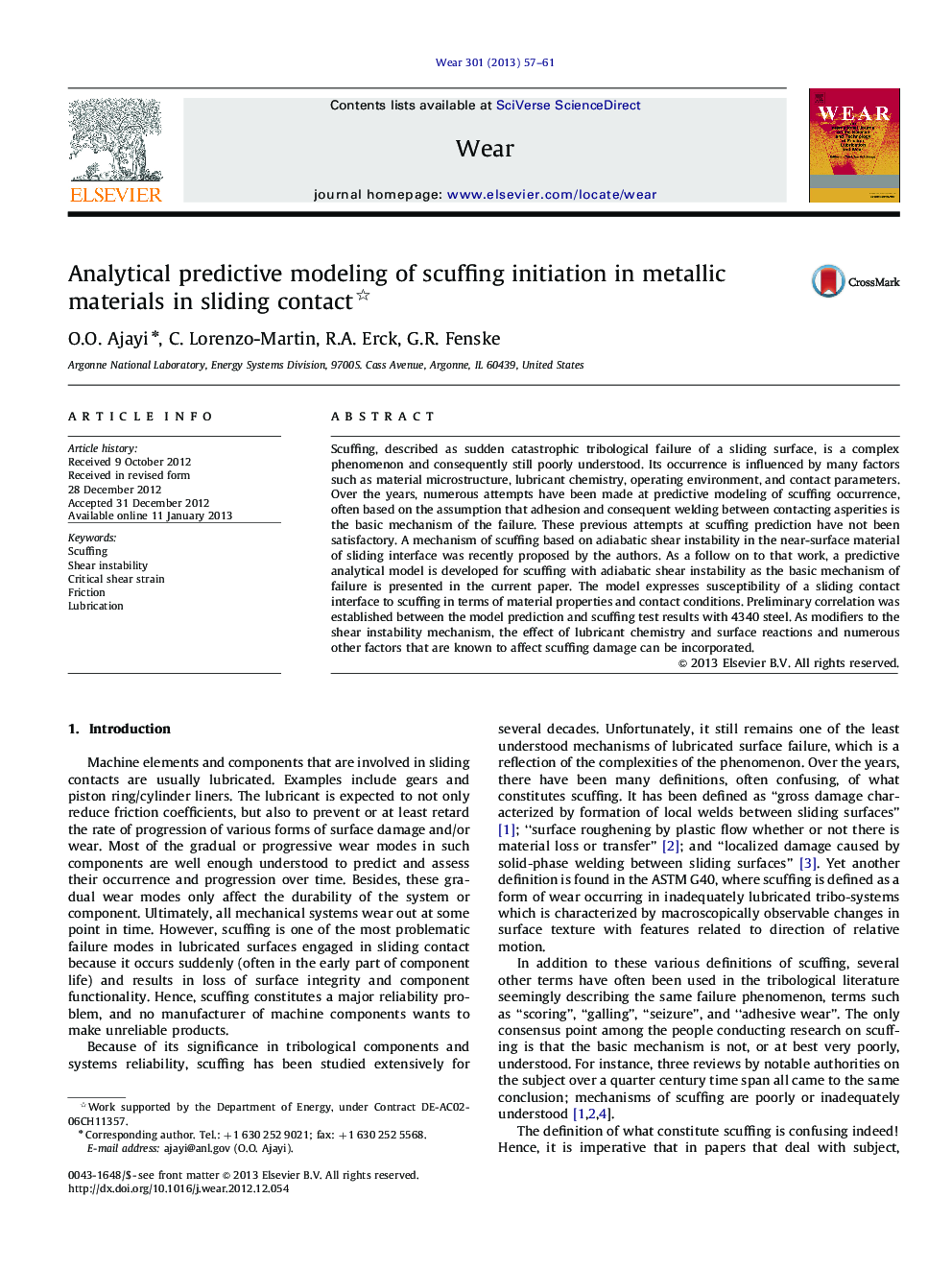| Article ID | Journal | Published Year | Pages | File Type |
|---|---|---|---|---|
| 617501 | Wear | 2013 | 5 Pages |
Scuffing, described as sudden catastrophic tribological failure of a sliding surface, is a complex phenomenon and consequently still poorly understood. Its occurrence is influenced by many factors such as material microstructure, lubricant chemistry, operating environment, and contact parameters. Over the years, numerous attempts have been made at predictive modeling of scuffing occurrence, often based on the assumption that adhesion and consequent welding between contacting asperities is the basic mechanism of the failure. These previous attempts at scuffing prediction have not been satisfactory. A mechanism of scuffing based on adiabatic shear instability in the near-surface material of sliding interface was recently proposed by the authors. As a follow on to that work, a predictive analytical model is developed for scuffing with adiabatic shear instability as the basic mechanism of failure is presented in the current paper. The model expresses susceptibility of a sliding contact interface to scuffing in terms of material properties and contact conditions. Preliminary correlation was established between the model prediction and scuffing test results with 4340 steel. As modifiers to the shear instability mechanism, the effect of lubricant chemistry and surface reactions and numerous other factors that are known to affect scuffing damage can be incorporated.
